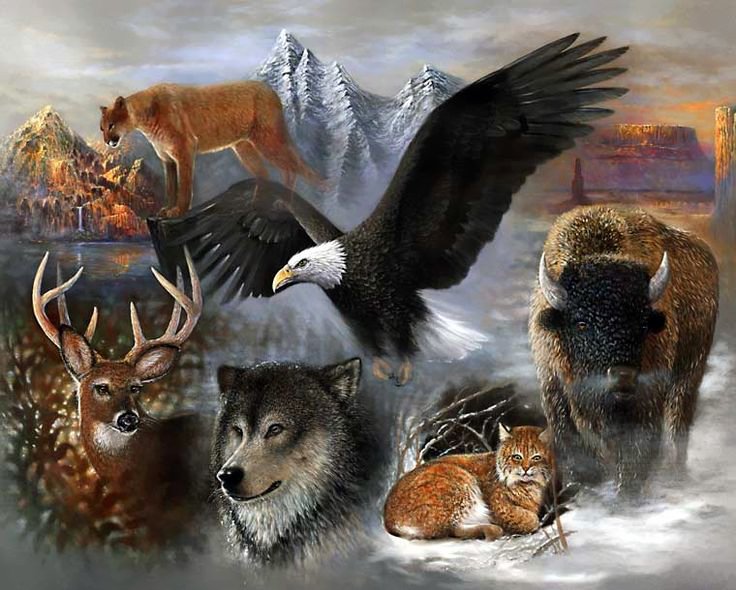Exploring Native American Shamanism: Ancient Wisdom and Practices
- Details
- Written by And-El
- Views: 2375

Native American shamanism, a spiritual practice deeply rooted in the indigenous cultures of North America, offers a unique perspective on the interconnectedness of life, nature, and the spiritual world.
This article delves into the intricate tapestry of Native American shamanism, exploring its origins, practices, and the profound wisdom it holds.
Origins and Beliefs
Shamanism among Native American tribes dates back thousands of years, forming an integral part of their culture and worldview. Unlike the term 'shamanism' that originated in Siberia, Native American spiritual leaders often go by different titles in their respective languages, but their roles and significance are strikingly similar.
Central to Native American shamanism is the belief in a world animated by spirit. This perspective sees all elements of nature - animals, plants, rocks, and even celestial bodies - as imbued with spirit. Shamans act as intermediaries between the human world and the spirit world, often believed to possess the ability to communicate with animal spirits, ancestors, and otherworldly beings.
The Shaman’s Role
Shamans in Native American cultures serve various roles: healers, storytellers, keepers of wisdom, and spiritual guides. Their responsibilities often include healing physical and mental illnesses, leading ceremonies, interpreting dreams, and guiding souls to the afterlife. They are revered as custodians of tribal history and lore.
The path to becoming a shaman is unique to each tribe. Often, it involves a calling, which may come through a vision or a profound spiritual experience, and a subsequent period of training under an experienced shaman.
Practices and Ceremonies
Shamanic practices vary widely among different tribes but often include rituals, music, dancing, and the use of sacred objects. One common practice is the vision quest, a rite of passage involving solitude, fasting, and meditation, intended to gain spiritual insight and guidance.
Other ceremonies may include the sweat lodge, a purification ritual that symbolizes rebirth, and the use of sacred plants like tobacco, sweetgrass, cedar, and sage for cleansing and offering prayers.

The Use of Totems and Animal Spirits
Animal totems and spirits hold significant importance in Native American shamanism. Shamans often call upon specific animal spirits for guidance, protection, and assistance in healing practices. Each animal is believed to embody certain qualities and lessons vital to human life.
Shamanism and Healing
Healing practices in Native American shamanism extend beyond the physical, addressing the spiritual and emotional aspects of wellbeing. Techniques may include herbal medicine, energy healing, and soul retrieval - a process believed to heal trauma by retrieving parts of the soul lost through distress.
Modern Relevance and Challenges
Today, Native American shamanism continues to thrive, adapting to contemporary contexts while retaining its essence. It offers insights into living in harmony with nature and emphasizes the importance of community and interconnectedness.
However, the practice faces challenges, including cultural appropriation and misunderstanding. It's vital to approach Native American shamanism with respect and sensitivity to its cultural significance and to seek understanding from authentic sources.
Native American shamanism is a rich, complex spiritual system that has endured and evolved over centuries. It provides a window into the profound spiritual connection that Native American cultures have with the natural world. As we seek deeper understanding and connection in our own lives, the wisdom of these ancient practices offers invaluable guidance and perspective.
In exploring the vibrant world of Native American shamanism, one not only uncovers a wealth of spiritual knowledge but also gains a deeper appreciation for the diverse and profound indigenous cultures that have shaped it.
This article is written exclusively by And-El of CrystalWind.ca © 2023 crystalwind.ca. All rights reserved. Do Not Copy.
We track all IP addresses with sniffer technology. Using a Proxy/VPN will not hide your IP address. This post first appeared on CrystalWind.ca.
Liked this article? Dive deeper into personal growth and wellness! Check out CrystalWind.ca for spiritual wisdom or explore AromaWorx.ca for natural well-being tips. Spread the positivity—share this with friends on their happiness journey!
Let’s Chat! Drop Your Thoughts Below! ![]()
Related Articles - Native American Path
Latest Articles

Imagine a world of inspiration and healing, free for all—made possible by YOU!
Donate Now—Ignite the Magic at CrystalWind.ca!

Epilepsy - Finding A Cure
Your donation can make a difference!
Help us find a cure – donate now!
Unlock Your Light: Join Lightworkers Worldwide on CrystalWind.ca!
Quake Watch
Follow Us!
Who is Online Now
We have 34922 guests and no members online
Featured This Month
Frogs Return Moon
Beaver – Chrysocolla - Blue Camas – Blue April 20 – May 20 The Frogs Retur... Read more
Sun in Taurus
Sun in Taurus April 21 through May 21 An Overview of Sun Sign Characteristi... Read more
Bright Beltane Blessings!
The wheel turns to Beltane, also known as Mayday, marking the beginning of S... Read more
Cartomancy - Fortune Telling Using Playing C…
Cartomancy is the act of divining using cards. Divining means to find out by... Read more
The Crystal Wind Oracle Card Deck
The Crystal Wind Oracle™ The Crystal Wind Oracle Myth & Magic Card D... Read more
Taurus Mythology
The Taurus Myth The story of Taurus is most vividly tied to the tale of Zeu... Read more
The Time of No Time: Beltane!
Around the medicine wheel of life we go, from season to season (solstice to ... Read more
The Seven Chakras and their Meanings
If you could imagine chakras as circles of energy, flowing all the way throu... Read more















































